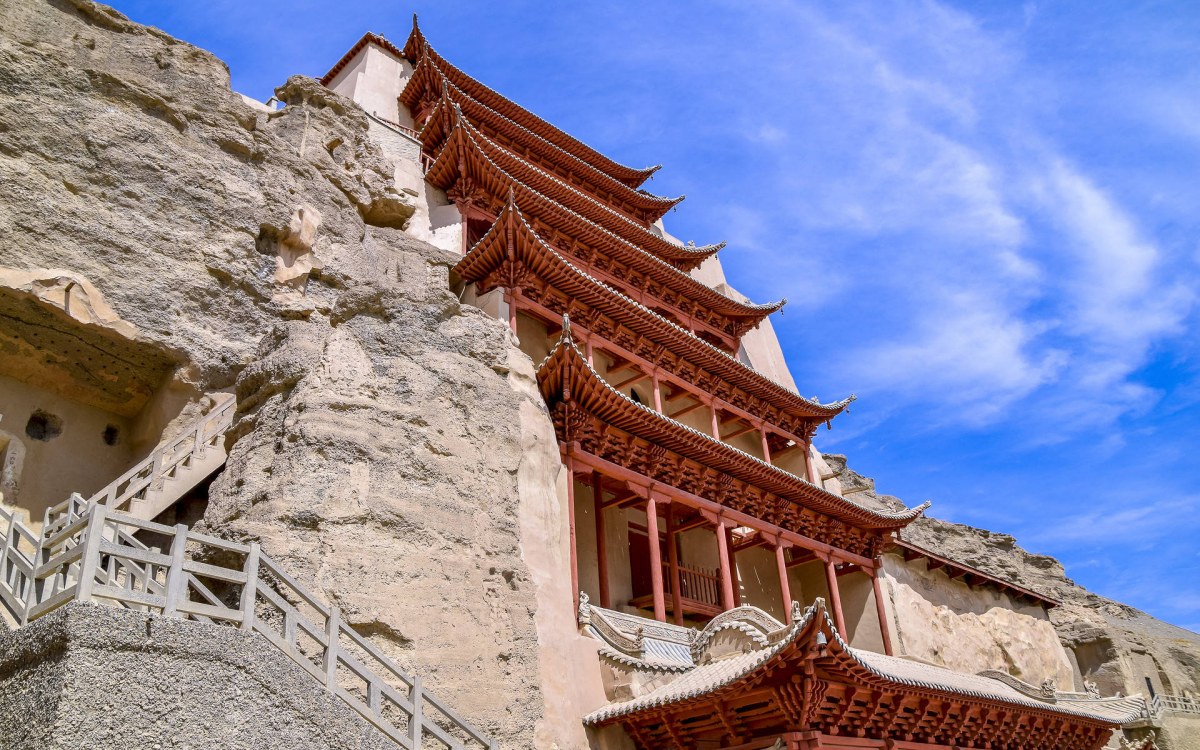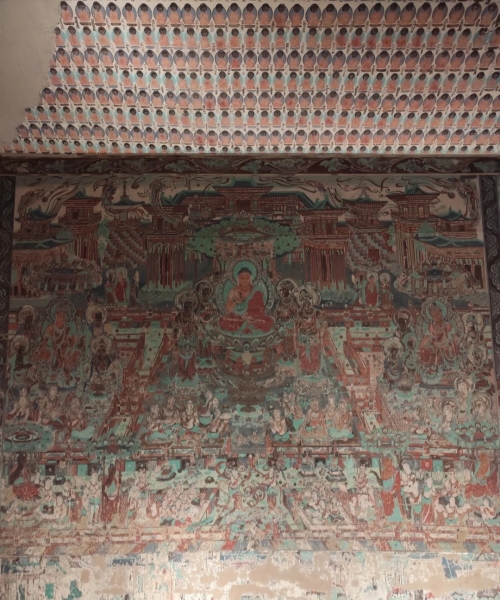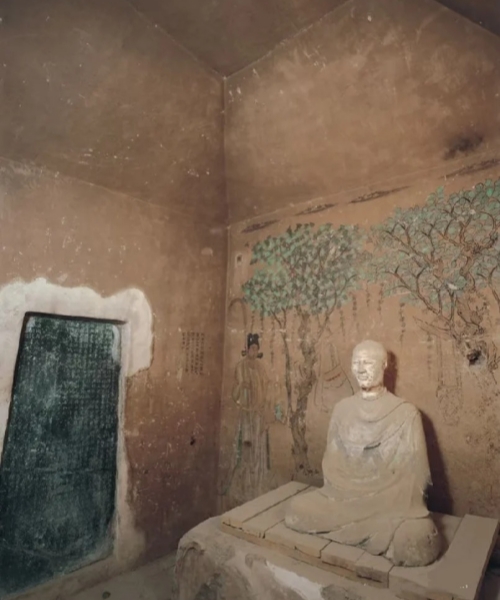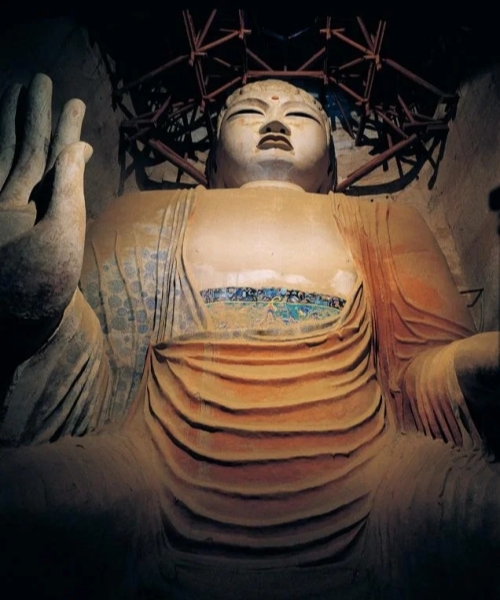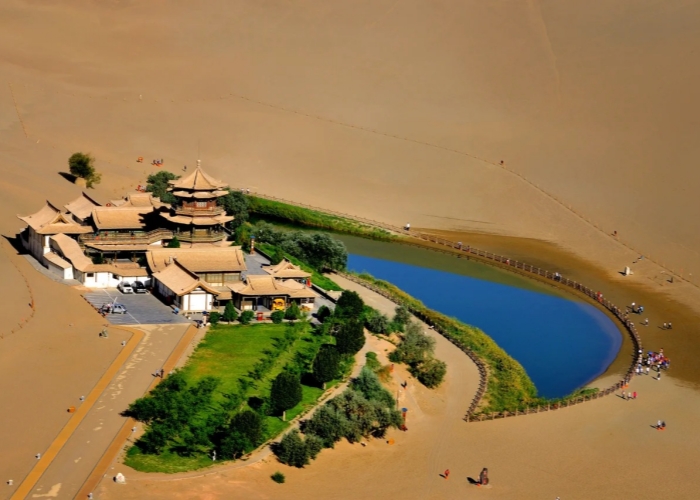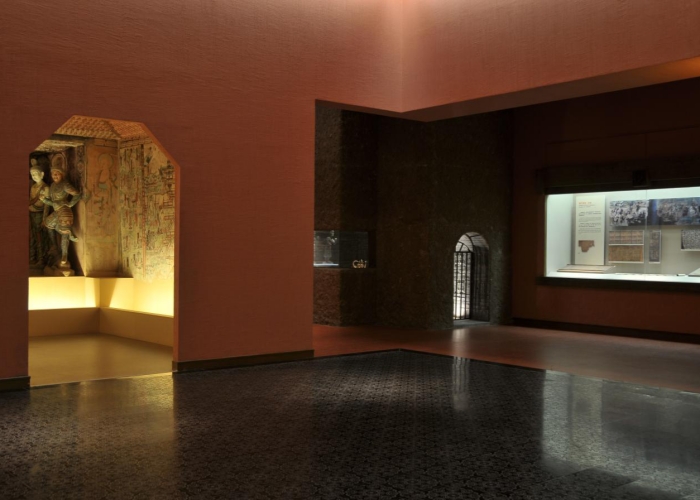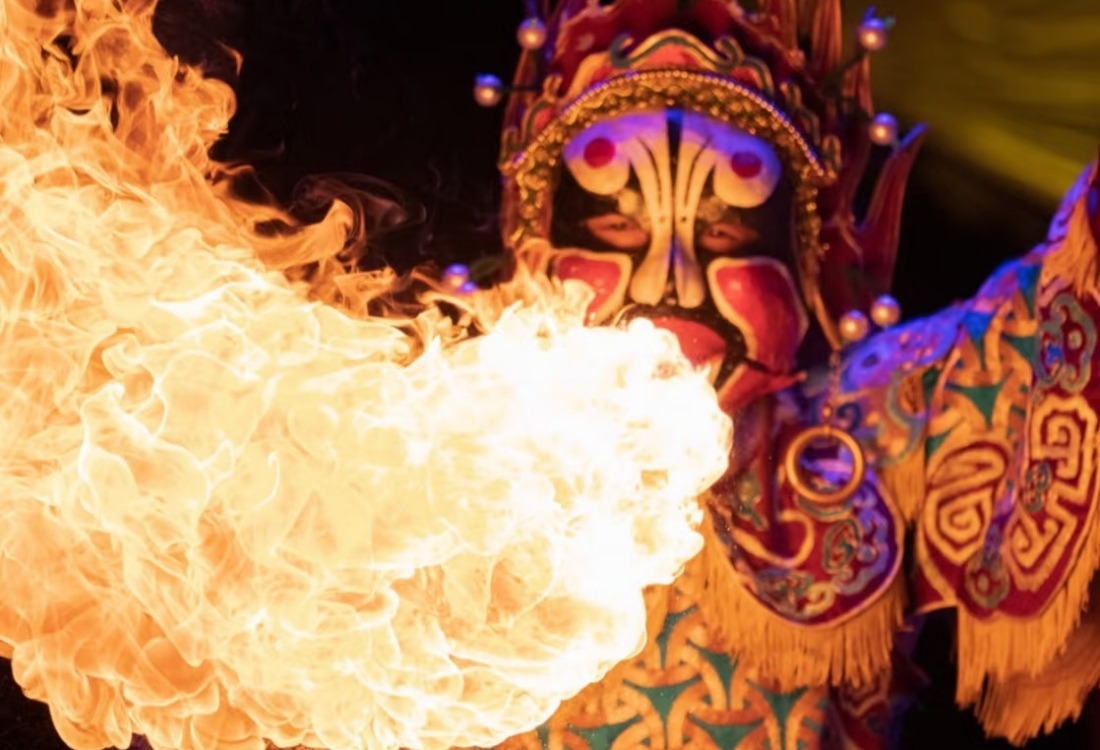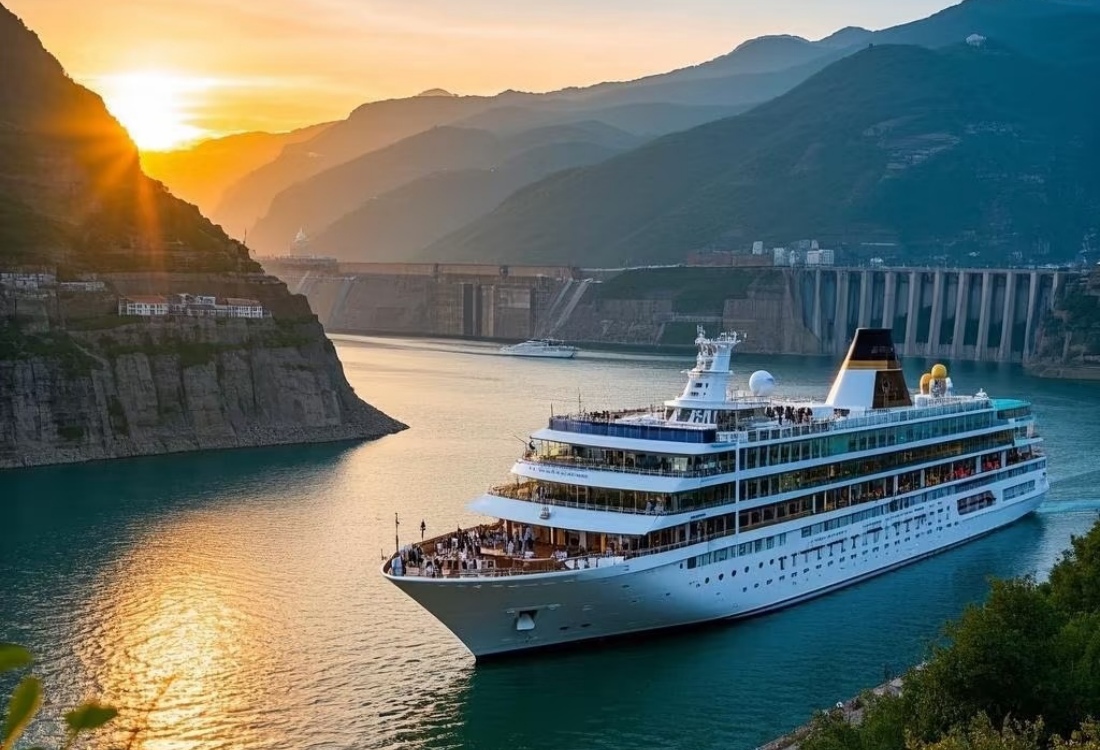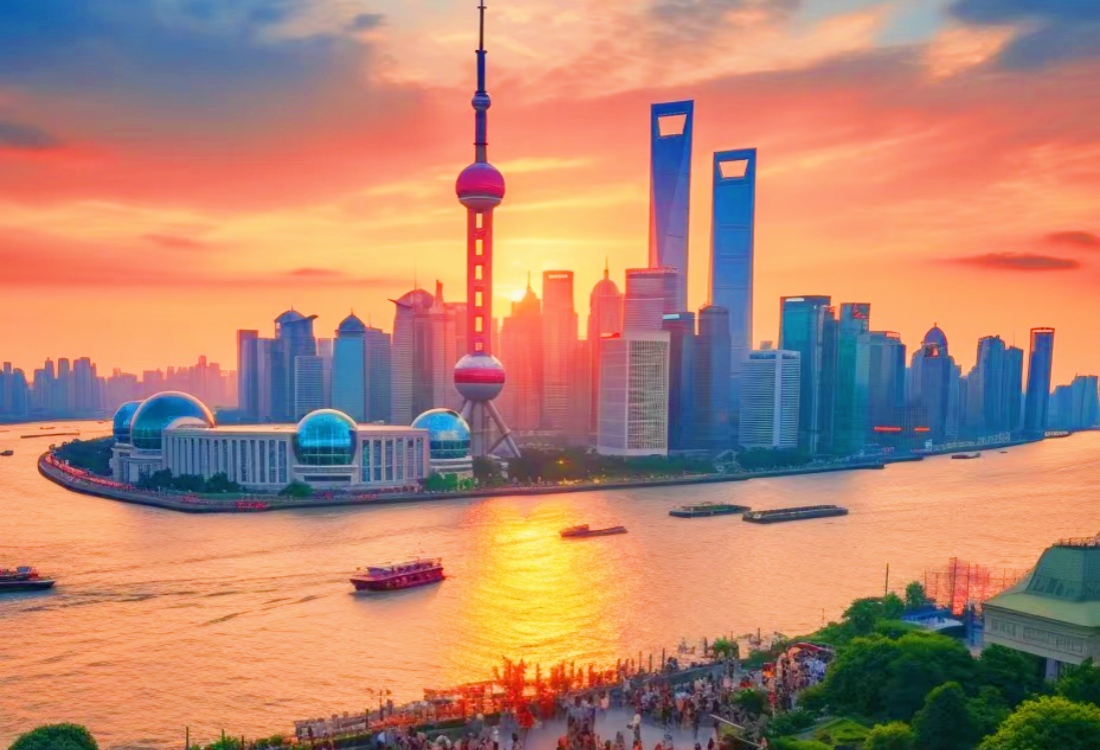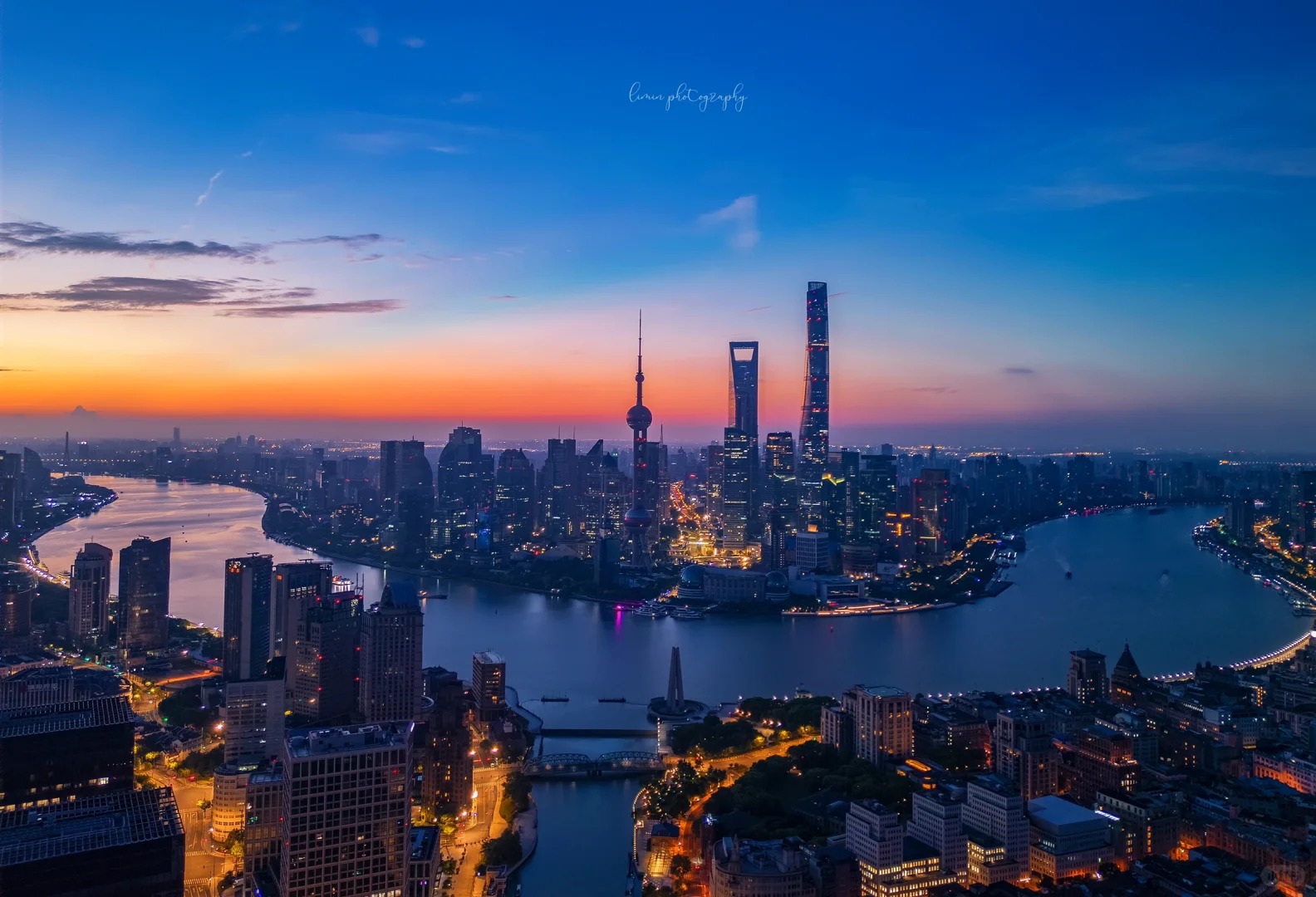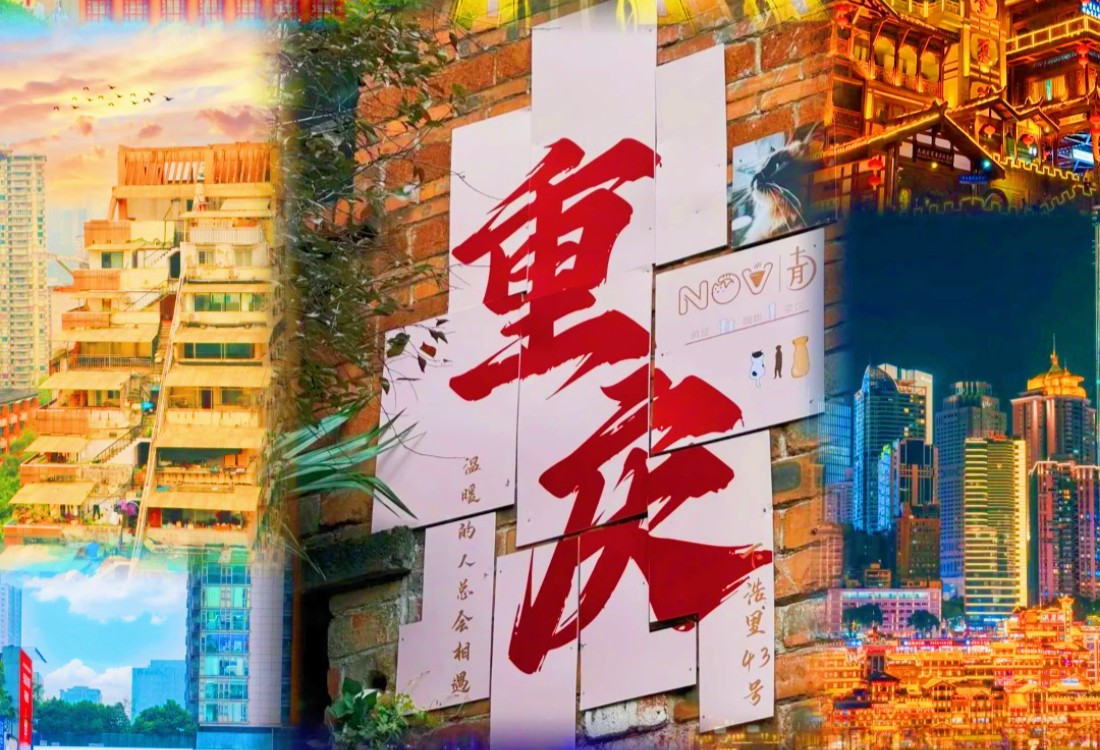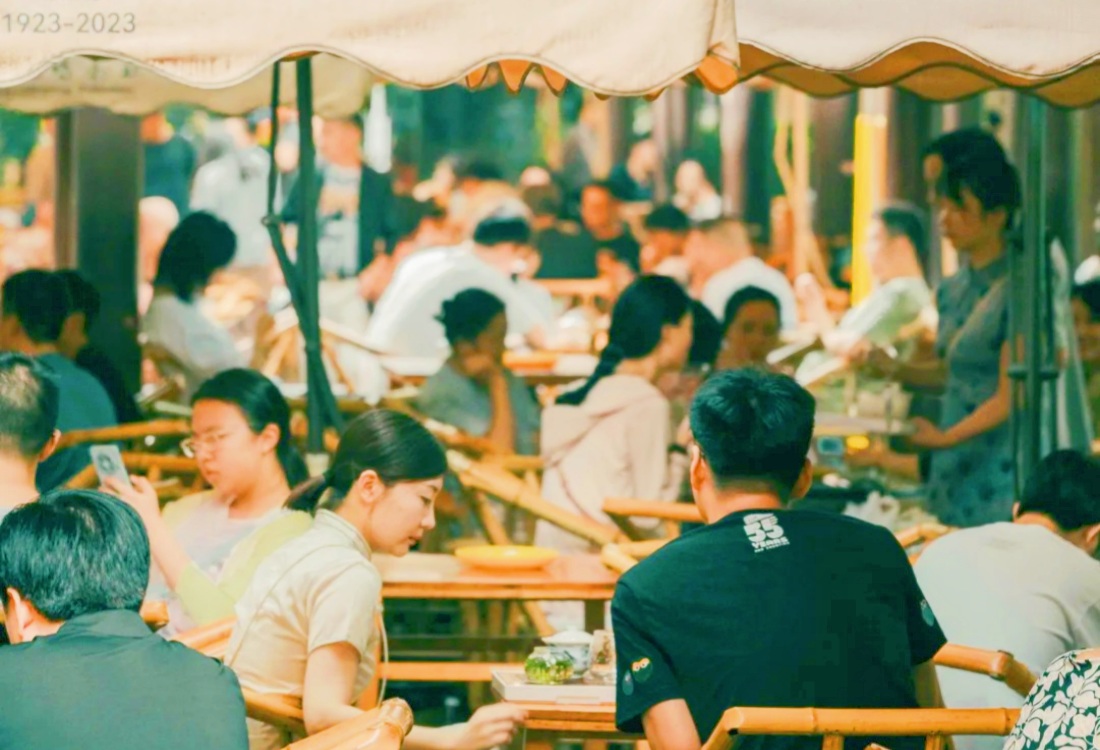Table of Contents
ToggleThis article provides you a comprehensive Mogao Caves travel guide packed with practical tips and advice. It will help you plan an unforgettable journey to this UNESCO World Heritage site, ensuring you can navigate your visit with ease and fully appreciate the rich tapestry of history, art, and spirituality preserved within the Mogao Caves.
What Exactly Are the Mogao Caves?
The Mogao Caves, often referred to as the “Caves of the Thousand Buddhas,” are a spectacular complex of ancient Buddhist grottoes nestled near Dunhuang city in China’s Gansu Province. Carved into cliff faces from 366 CE and expanded over a millennium until the 14th century, these caves served as vibrant centers for Buddhist worship, meditation, and artistic expression.
Today, the site boasts an astonishing 735 caves, containing over 45,000 square meters of intricate murals and more than 2,400 vividly colored sculptures. For any foreign traveler keen on history and art, a visit to the Mogao Caves offers a unique window into the evolution of Buddhist art and the rich cultural exchanges along the historic Silk Road. Their unparalleled artistic and historical value led to their designation as a UNESCO World Heritage Site in 1987.
Key Travel Information for Mogao Caves at a Glance
Here’s a table summarizing essential practical information for your visit to the Mogao Caves:
Aspect | Details |
Location | Approx. 25 km southeast of Dunhuang City, Gansu Province |
Best Time to Visit | Spring (April-June), Autumn (September-October) |
Entry Point | Mogao Caves Digital Exhibition Center (mandatory first stop) |
Opening Hours | Peak Season (April 1st – November 30th ): 08:00 – 18:00 Low Season (December 1st – March 31st ): 09:00 – 17:00 |
Booking | Advance booking highly recommended (online or via agencies). Passport required. |
Getting There from Dunhuang City | Taxi / Shuttle Bus to Digital Center. |
Photography | Strictly prohibited inside the caves. |
What to Wear | Comfortable walking shoes, layered clothing. |
What to Bring | Passport, water, sun protection (especially in summer). |
When is the Best Time to Visit the Mogao Caves?
Explore Mogao Caves in Spring & Autumn
The most comfortable and popular times to visit the Mogao Caves are during spring (April to June) and autumn (September to October). During these periods, Dunhuang enjoys mild temperatures, typically ranging from 15°C to 25°C (59°F to 77°F), making it pleasant for walking around the expansive site.
Summer (July and August) can be intensely hot, with desert temperatures often soaring, while winter (November to March) can be quite cold with biting winds, though you’ll encounter fewer tourists.
Daily Timing Tips for Mogao Cvaes
Regardless of the season, arriving early is advisable. The Digital Exhibition Center, your first stop, generally opens at 08:00(Peak Season) or 09:00(Low Season). An early start helps you beat the larger crowds and, in summer, the midday heat. Allocate enough time for the introductory films at the center before taking the shuttle to the caves themselves.
Getting to Dunhuang from Major Cities in China
Most international and domestic travelers reach Dunhuang by air or train. Dunhuang Mogao International Airport (DNH) has connections to major Chinese cities like Beijing, Xi’an, and Lanzhou. Dunhuang Railway Station also serves as a key arrival point.
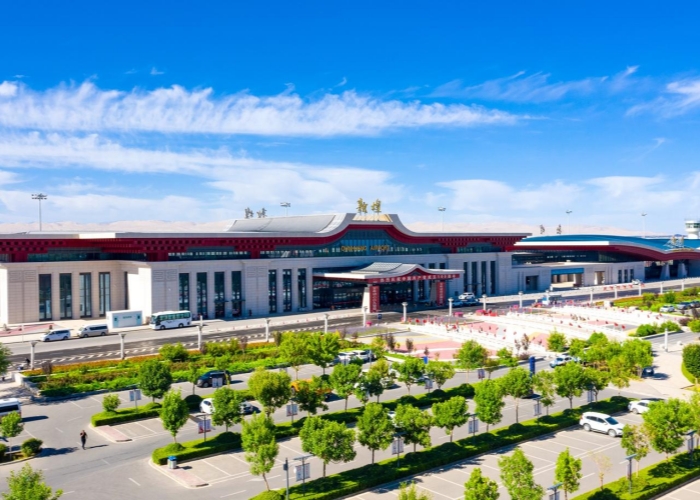
How to Reach the Mogao Caves from Dunhuang City
The Mogao Caves are located on the southeastern of Dunhuang, approximately 25 kilometers from the city center. To visit the Mogao Caves, all visitors must first go to the Mogao Caves Digital Exhibition Center, which serves as the only official entrance to the site. From there, you’ll board a shuttle bus that takes you about 15 kilometers to the Mogao Caves scenic area.
From Dunhuang Downtown to the Mogao Caves
The Mogao Caves Digital Exhibition Center is located about 10 km from Dunhuang city center, near the popular Shazhou Night Market.
By Bus: Take the bus (莫高镇城乡公交班线) from the Shiquzhan Station(市区站) near the Silk Road Yiyuan Hotel (丝路怡苑大酒店) directly to the Mogao Caves Digital Exhibition Center Station(莫高窟数字中心站).
By Taxi: A ride takes around 15–20 minutes, depending on traffic.
From Dunhuang Railway Station to the Mogao Caves
The railway station is just 2 km from the Digital Exhibition Center.
On Foot: It’s about a 20-minute walk.
By Taxi: A taxi ride takes about 5 minutes—a convenient option if you’re carrying luggage.
From Dunhuang Airport to the Mogao Caves
Dunhuang Airport is approximately 5 km from the Digital Exhibition Center.
By Taxi: The journey takes around 10 minutes.
By Shuttle Bus: You can also take the airport shuttle bus and get off at Dunhuang Railway Station, then walk to the digital center.
From the Digital Exhibition Center to the Mogao Caves Scenic Area
Visitors must first check in at the Mogao Caves Digital Exhibition Center, where you’ll watch two introductory films before boarding the shuttle bus to the actual caves. The shuttle ride takes about 20 minutes (approximately 15 km).
What to Expect During Your Mogao Caves Tour
The Digital Exhibition Center: Your First Stop
All visits to the Mogao Caves begin at the Digital Exhibition Center. Here, you will watch two high-definition documentary films: “A Thousand Years of Mogao Caves” and “Splendors of Buddha’s Palace.” These films provide excellent historical context and showcase the interiors of some caves, including those not always open to the public, enriching your understanding before you see the actual grottoes.
Highlights Caves to Look Out for(Subject to Availability)
While the caves you visit will depend on the day’s rotation, some of the most renowned Mogao Caves include:
- Cave 17: Famous for the discovery of tens of thousands of ancient manuscripts in 1900, including the Diamond Sutra, the world’s earliest dated complete printed book.
- Cave 96: Houses a colossal seated Buddha statue, approximately 34.5 meters (113 feet) tall, an awe-inspiring sight.
- Cave 85: A Tang Dynasty masterpiece known for its vivid murals and beautifully preserved statues.
- Cave 217: Features stunning murals depicting Buddhist stories and landscapes from the Tang Dynasty.
- Cave 285: An early cave (Western Wei Dynasty) notable for its unique blend of Chinese and Western artistic elements, including Hindu deities.
Some “special caves” containing particularly exquisite or fragile artworks may be accessible for an additional fee and might require separate arrangements, often possible on-site.
Practical Tips for a Smooth Visit to the Mogao Caves
To ensure your journey to the Mogao Caves is enjoyable and hassle-free, keep these practical tips in mind:
- Wear Comfortable Footwear: You will be doing a fair amount of walking on uneven terrain and potentially some stairs.
- Dress in Layers: The desert climate means temperatures can fluctuate significantly between day and night, and even between sun and shade.
- Stay Hydrated and Protected: Bring water, especially during warmer months. Sunscreen, sunglasses, and a hat are also essential due to the strong desert sun.
- Carry Your Passport: It’s required for entry verification.
- Respect the Rules: Adhere to the no-photography rule inside the caves, avoid touching any artworks, and keep your voice low to maintain a respectful atmosphere.
- Manage Expectations: Only a fraction of the 700+ caves are open to the public at any given time, and access is rotated to aid conservation. The introductory films help showcase more.
Beyond the Mogao Caves: Exploring Dunhuang’s Other Treasures
While the Mogao Caves are undoubtedly the main draw, Dunhuang and its surroundings offer other fascinating attractions that can enrich your visit:
Mingsha Mountain (Echoing Sand Mountain) & Crescent Moon Lake
A stunning natural landscape of towering sand dunes surrounding a crescent-shaped oasis. Popular for camel rides, sand surfing, and watching sunrise/sunset. Many recommend visiting in the evening for beautiful views and sometimes light shows.
Dunhuang Museum
Houses a collection of artifacts related to the Silk Road, Dunhuang’s history, and items discovered in the Mogao Caves region. It’s a good place to deepen your understanding of the area’s cultural heritage.

10 Days Silk Road Gansu Tour from Xi’an : Dunhuang, Lanzhou, Xiahe, Jiayuguan
Shazhou Night Market
A vibrant local market where you can sample regional cuisine, shop for souvenirs, and experience the local atmosphere in the evenings.
Yumenguan Pass (Jade Gate Pass) and Yangguan Pass
Ruins of ancient Han Dynasty fortifications that once guarded crucial sections of the Silk Road west of Dunhuang. These sites offer a glimpse into the region’s strategic importance.
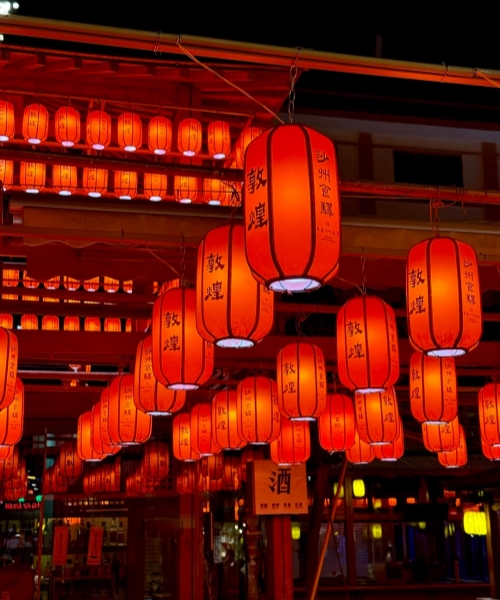
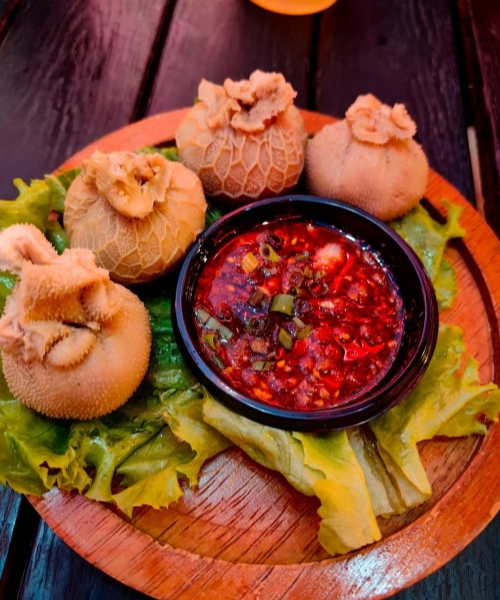
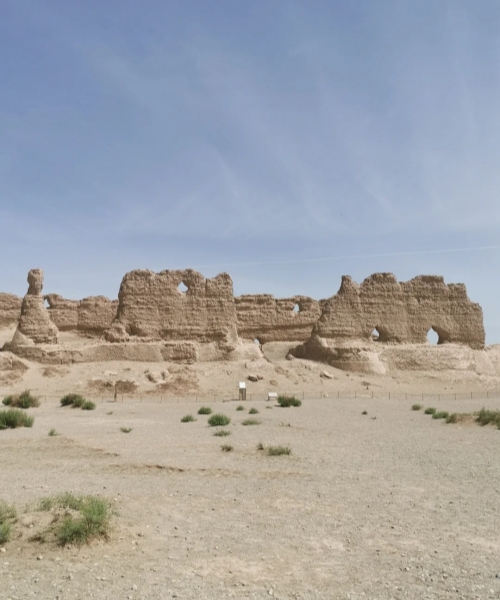
Frequently Asked Questions (FAQs) about Visiting Mogao Caves
How much time should I allocate for a visit to the Mogao Caves?
Plan for at least half a day. This includes time for the introductory films at the Digital Exhibition Center (about 1 hour), the shuttle bus ride to and from the caves (about 40-60 minutes round trip), and the guided tour of the caves themselves (typically 2-3 hours).
Are there any restrictions on what I can bring into the Mogao Caves?
Large bags or backpacks may need to be stored before entering the cave area. Food and drink are generally not allowed inside the actual grottoes. Most importantly, cameras and any photographic equipment are strictly prohibited inside the caves.

